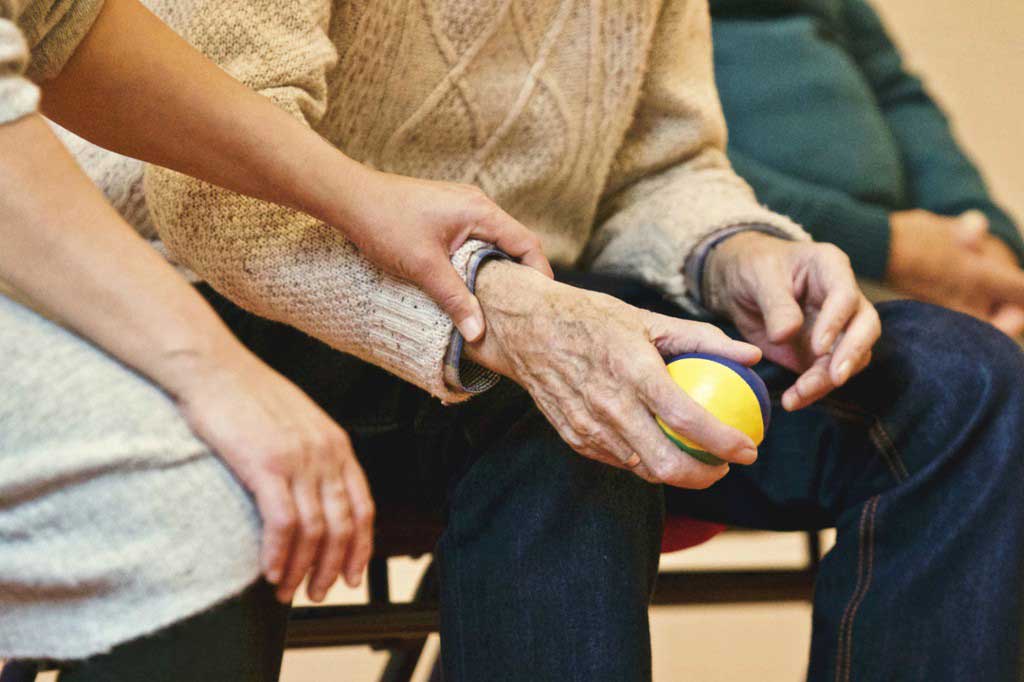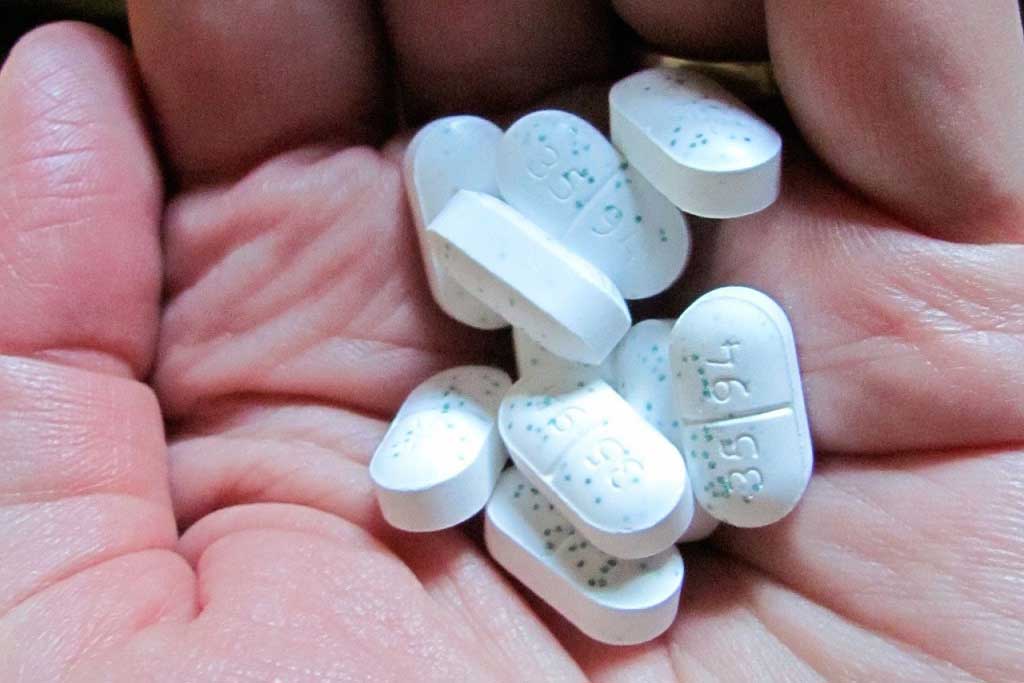Stroke risk lower with HRT patches
Older people
“HRT patches may be safer than tablets,” reports The Daily Telegraph. Its story is based on new research that has found that women using low-dose hormone replacement therapy (HRT) patches...
“HRT patches may be safer than tablets,” reports The Daily Telegraph. Its story is based on new research that has found that women using low-dose hormone replacement therapy (HRT) patches had no greater stroke risk than women who did not use HRT.
This large and well designed study, which included more than 75,000 women, suggests that low-dose HRT patches may be safer than tablets in terms of stroke risk. However, it found that patches providing higher doses still significantly increased the risk of stroke.
The results could affect the types of HRT prescribed by doctors and influence which products women choose. However, further research is needed to confirm these results and examine the rates of other types of side effects seen with patch use.
Where did the story come from?
The study was carried out by epidemiologists and researchers from the Jewish General Hospital, McGill University in Montreal and the Bremen Institute for Prevention Research and Social Medicine, University of Bremen. It was funded by the Canadian Institutes of Health Research, the Canadian Foundation for Innovation, and Organon, a manufacturer of HRT products. It was published in the peer-reviewed British Medical Journal.
Generally, the media reported the story accurately. The Telegraph ’s headline suggested that HRT patches may be safer than tablets overall, when the research looked only at stroke risk and no other potential risk factors. The Daily Mirror ’s headline that high-dose HRT has “90% stroke risk” implied, rather alarmingly, that nine in ten women who take high-dose HRT will have a stroke, when the result was an 89% increase in relative risk for high-dose HRT patches. In absolute terms, stroke was a relatively rare outcome in this study. The Mirror also focused on this one result and underplayed the important finding that low-dose patches actually presented a lower stroke risk than oral HRT, which previous studies have already associated with increased stroke risk.
What kind of research was this?
This was a nested case-control study, carried out on a cohort (population) of more than 870,000 women, drawn from the General Practice Research Database. This type of study, in which researchers compare a group of patients who experience a particular condition (in this case, stroke) to a group who do not have it, is useful for identifying potential risk factors. It has the advantage that both cases and controls came from the same overall population, in this case people registered with UK primary care or general practices. However, on its own, it cannot prove causation. Although it can show an association between the two, it cannot show that treatment directly leads to a stroke.
The researchers point out that HRT, whether containing oestrogen alone or combining oestrogen and progestogen, is regularly prescribed for relief of menopausal symptoms. Clinical trials have shown an increased stroke risk associated with HRT, but these trials have mostly looked at oral HRT and did not explore other forms of administration.
Several other types of study have suggested that, because HRT patches bypass the liver, they may have a different effect on cardiovascular risk from HRT tablets. The aim of this study was to assess the risk of stroke associated with the two different ways of taking HRT.
What did the research involve?
Researchers used the UK’s General Practice Research Database (GPRD), a large computerised database of medical records of more than 6 million patients registered with 400 general practices throughout the UK. All women were between the ages of 50 and 79 years and had no diagnosis of previous stroke. Among these records, they identified a group of women who had had a stroke during the study (the case group), which ran from January 1987 and October 2006. They matched each case to similar women who did not have a stroke (the control group). All the suitable women were followed until they had a stroke, died, left their GP practice or the study period came to an end.
The researchers identified all cases of a first recorded diagnosis of stroke (ischaemic, haemorrhagic or not further specified) which occurred during the study period, using standard diagnostic codes. For each woman who had a stroke, up to four others who had not had a stroke were selected from the cohort and closely matched to the stroke cases on factors such as age at diagnosis, the general practice they attended and the year they joined the practice. Where no suitable controls could be identified, women who had had a stroke were excluded.
The researchers then looked at information on the women’s HRT use, including the length of time for which it had been taken and whether they were past or current users. They categorised HRT products used into oestrogens only, oestrogens plus progestogen, progestogen only and tibolone (a synthetic form of HRT). They also collected information on whether oestrogen was taken as tablets or as patches, and also whether women used high- or low-dose oestrogen.
They then analysed the data to find out the risk of stroke associated with use and non-use of HRT. The risk among HRT users was analysed according to whether they had used tablets or patches and a high or low dose of oestrogen. In a separate analysis, they also looked at the risk of stroke according to whether HRT had been used for less or more than one year.
The researchers adjusted all their results to take into account other factors that are thought to affect the risk of stroke, such as body mass index, smoking habits and alcohol misuse. They also took into account the presence of conditions associated with higher risk, such as diabetes, high cholesterol and high blood pressure.
The researchers also made minor statistical adjustments to account for any error that might have crept into the data, such as classifying women in the wrong group.
What were the basic results?
From a population of more than 870,000 women, the researchers identified 15,710 cases of stroke, matched to 59,958 controls. The main results were as follows:
- Across the whole cohort of women, the rate of stroke was 2.85 cases per 1,000 women per year.
- Women using low-dose oestrogen patches (with or without progestogen) had no increased risk of stroke compared with women who had not used HRT [rate ratio 0.81 (95% CI 0.62 to 1.05)].
- Women using high-dose patches had an increased risk of 89% compared with non-users [rate ratio 1.89 (95% CI 1.15 to 3.11)].
- Women using HRT orally, including low- and high-dose, had a 28% higher rate of stroke than non-users [rate ratio 1.28 (1.15 to 1.42)].
- The stroke risk may be 35% higher in long-term users of oral oestrogens than in non-users [rate ratio 1.35 (95% CI 1.20 to 1.52)].
They also found HRT use among the cohort to be relatively low, with only about 7% of women using it. HRT taken orally was far more common than HRT patches: in the control group, between 72 and 91% of current users were taking tablets.
How did the researchers interpret the results?
Using low-dose HRT patches does not seem to increase the risk of stroke and may, therefore, be a safer alternative to taking HRT orally, the researchers conclude. They point out that the results are in line with the presumption that, since HRT patches deliver oestrogen directly into the bloodstream and avoid the liver, certain processes carried out by the liver, which could raise the risk of blood clots and inflammation, are avoided. However, they point out that this possible effect may vary according to HRT dose.
The researchers say that, on their own, the results are not “definitive evidence” that patches are safer, but argue that “this study should encourage further research on the importance of the route of administration to define the role of transdermal oestrogens in the therapeutic arsenal for the treatment of menopausal symptoms”.
Conclusion
This large and carefully-designed study, seemingly the first of its kind to look at stroke risk and different routes of administration of HRT, has found that low-dose HRT patches may be safer to use than oral HRT, in terms of stroke risk. The study took into account many other risk factors for HRT and it also took into account the trend in use of HRT over time, by the matching of cases and controls in calendar time.
However, the authors note one drawback: they were unable to take into account women’s social and economic status or educational background, which could have affected the results. They did, however, match all cases with controls from the same general practice, which may have indirectly controlled for socio-economic status. Other minor limitations include lack of access to patients’ charts to validate stroke diagnosis (although the use of diagnosis codes for stroke is thought to be accurate) and lack of differentiation between different types of stroke.
Although further research is needed, this important finding could affect both prescribing practice and women’s choice of which method of HRT they wish to use.
It is important to point out that, although the increases in risk for women using high-dose patches and all types of oral HT look high, these are relative risk increases. For example, in the present study, overall, between two and three women in every 1,000 had a stroke each year. The 89% increased risk associated with use of high-dose patches would equate to about two to three extra women in every thousand potentially having a stroke on high-dose patches compared with if they had received no treatment.
HRT is also associated with an increased risk of other disorders including breast cancer, venous thromboembolism and, in some women, coronary heart disease. It is important to note that the present study only looked at stroke risk.






 Subscribe
Subscribe Ask the doctor
Ask the doctor Rate this article
Rate this article Find products
Find products








